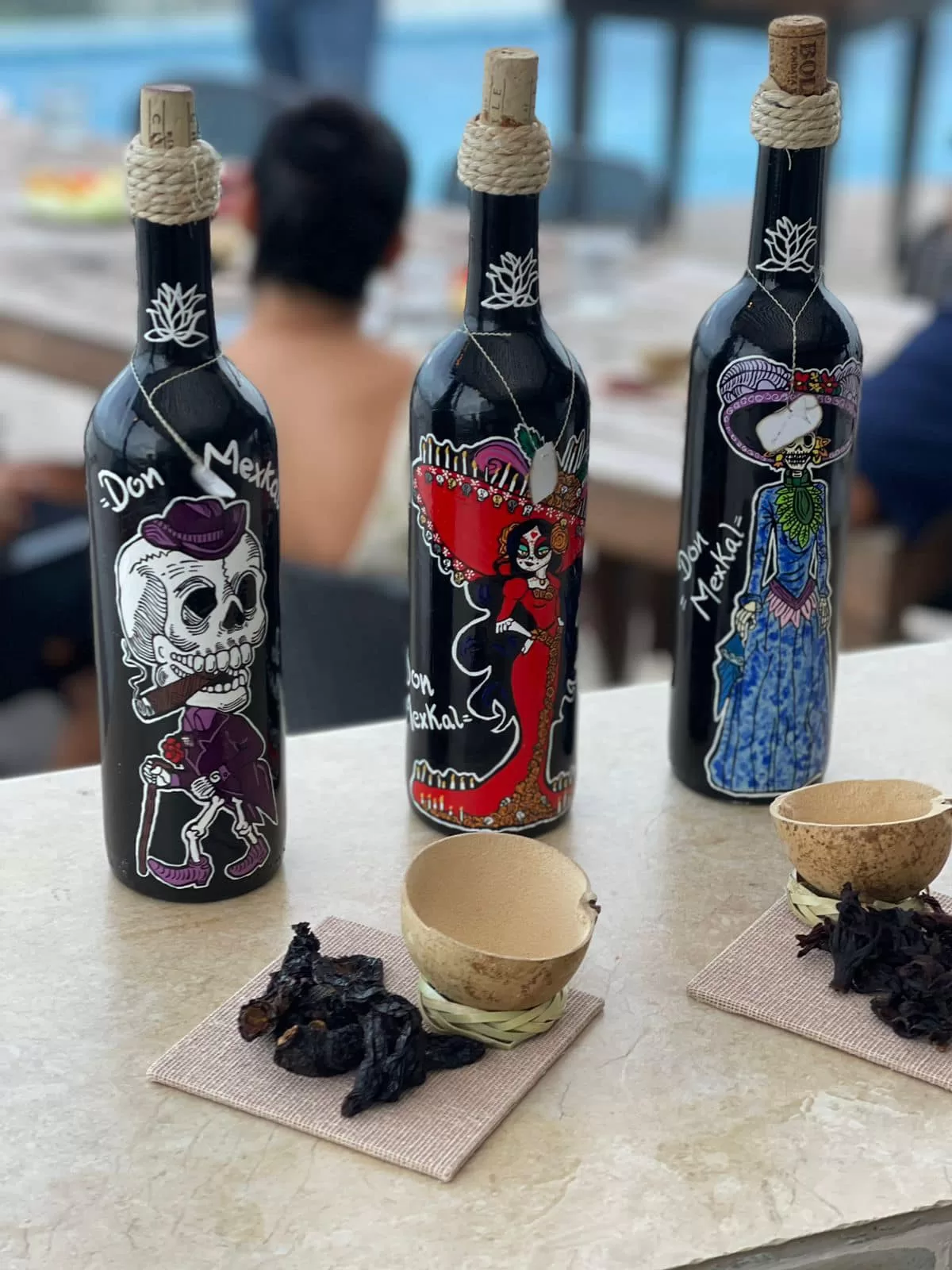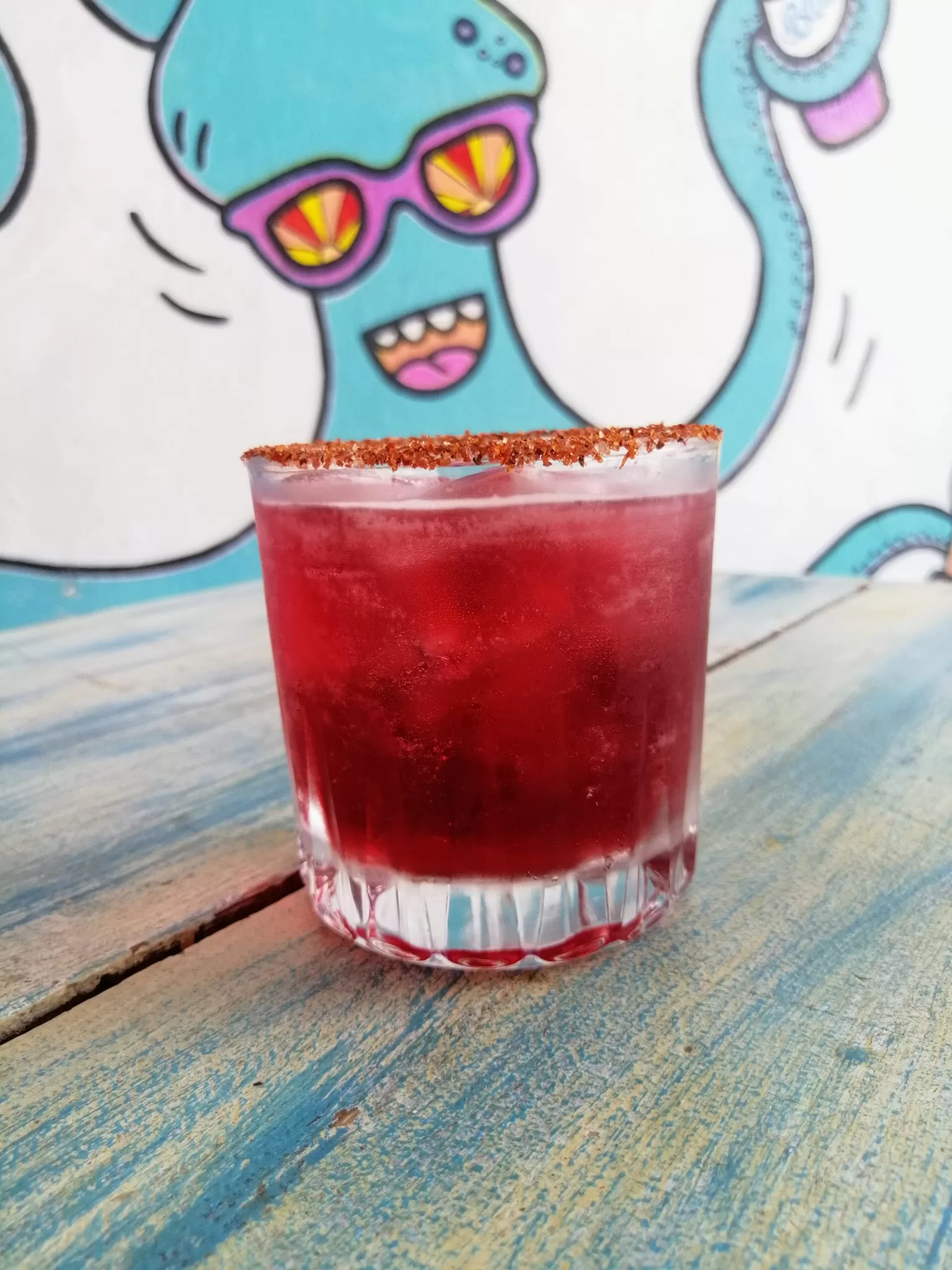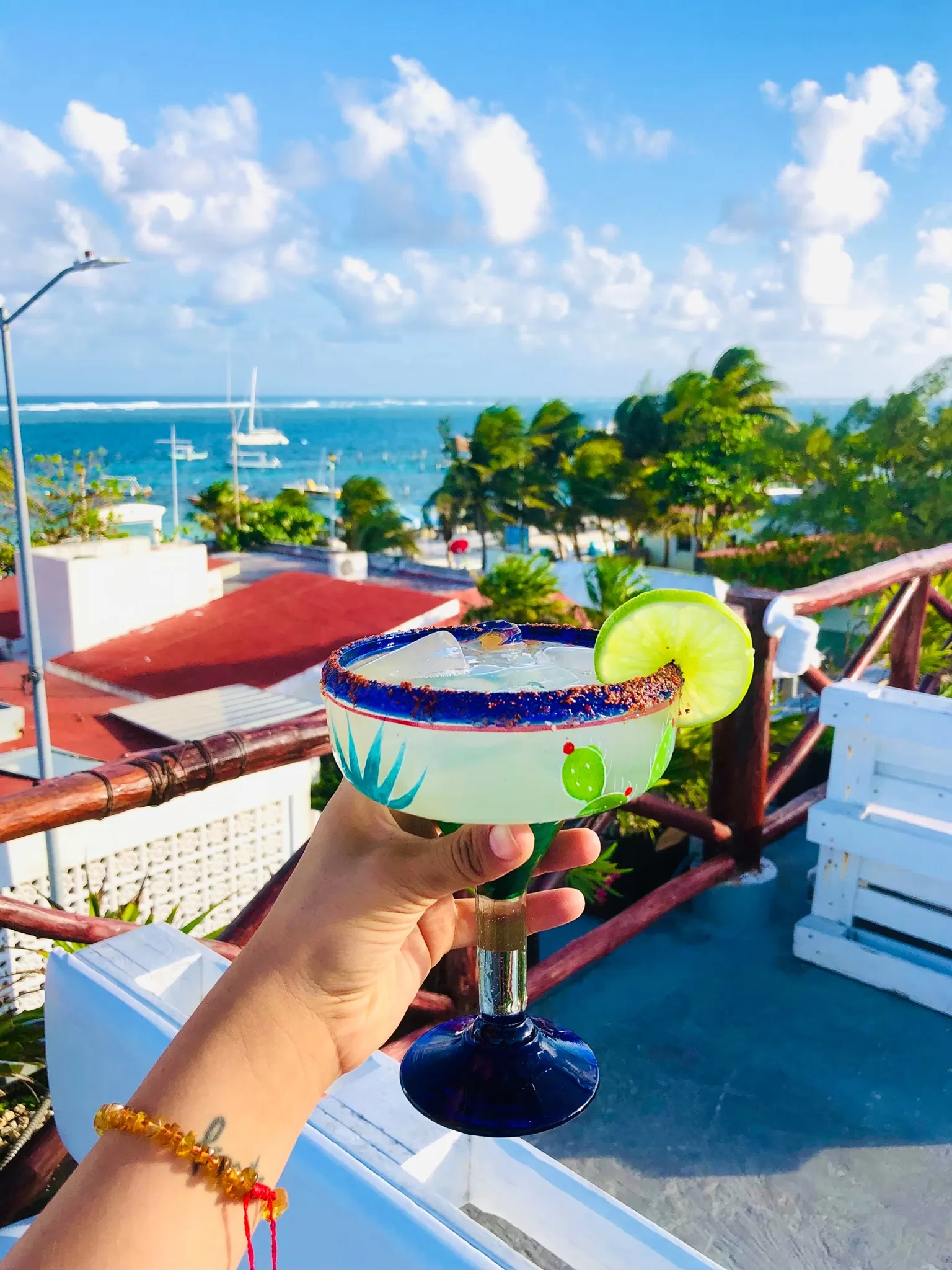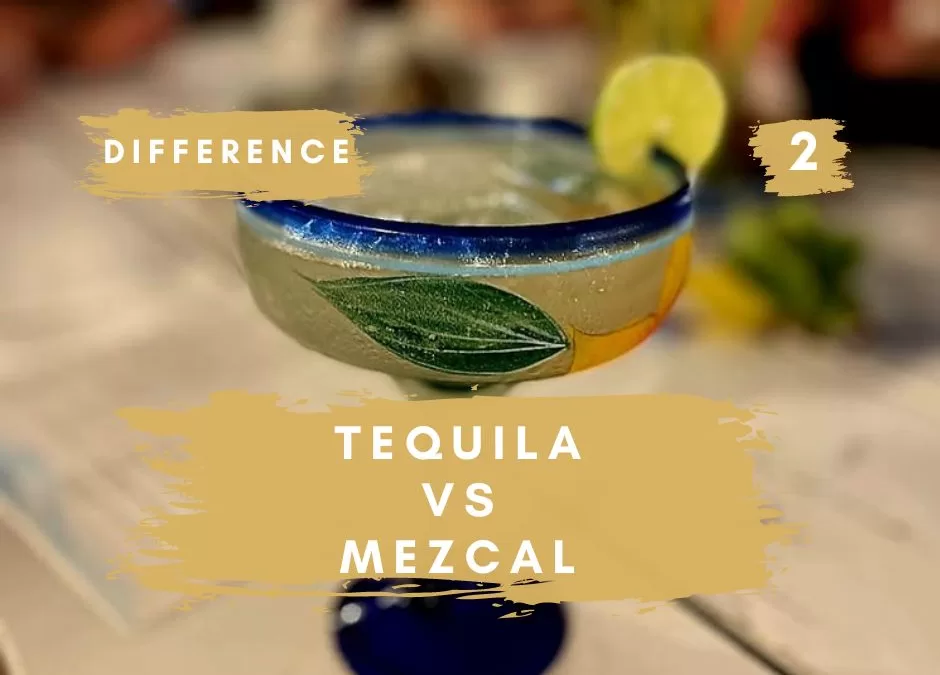Are you curious about the main differences between tequila and mezcal? The short answer lies in their production methods and regional specificity. Here at Experience Puerto Morelos, we are big fans of both and consider ourselves experts on the subject! 😉 Here in our second blog post about tequila and mezcal this month (if you missed the first post, you can read it here “Tequila vs Mezcal + Happy Hours in Puerto Morelos (1/4)”), we’ll answer the frequently asked questions and share the where and what to order to get the most out of your tequila and mezcal experience while you’re here!



Tequila and Mezcal FAQ
What is tequila, and how is it different from mezcal?
Tequila is a distilled spirit made exclusively from the blue agave plant. It is primarily produced in the highlands – Los Altos – of the state of Jalisco, Mexico. Mezcal, on the other hand, is a broader category of spirits made from various species of agave plants. While all tequilas are technically mezcals, not all mezcals are tequilas. The main difference lies in the production regions, types of agave used, and production methods.
What are the main types and categories of tequila and mezcal?
Tequila is classified into different types based on its aging process:
- Blanco (unaged or aged for less than two months),
- Reposado (aged between two months and one year),
- Añejo (aged between one and three years), and
- Extra Añejo (aged for more than three years).
Mezcal, on the other hand, is categorized by its production regions and agave varieties, resulting in a wide range of flavor profiles and characteristics.
What are the key differences in production methods between tequila and mezcal?
Tequila is typically produced using industrial ovens to cook the agave, while mezcal traditionally involves roasting the agave in underground pits lined with volcanic rocks, giving it a distinct smoky flavor. Tequila is also made from steamed agave hearts, while mezcal uses the traditional method of crushing the cooked agave with a stone wheel known as a tahona.
Which regions of Mexico are known for producing tequila and mezcal?
Tequila is primarily produced in the state of Jalisco, particularly in the town of Tequila and the surrounding highlands. Mezcal production is concentrated in several regions, including Oaxaca, Durango, Guerrero, San Luis Potosí, and Zacatecas.
What types of agave plants are used in the production of tequila and mezcal?
Tequila is made exclusively from the blue agave (Agave tequilana), while mezcal can be made from various agave species, including Espadín, Tobalá, Madrecuixe, and many others, each contributing unique flavors and characteristics to the final product.
How does the aging process affect the flavors and characteristics of tequila and mezcal?
Aging tequila in oak barrels adds complexity, as it absorbs flavors from the wood, resulting in notes of vanilla, caramel, and spice. Mezcal aging can also take place in different types of barrels or even in glass containers, with aging periods ranging from a few months to several years, imparting distinct flavors and aromas.
Can you recommend some popular and high-quality brands of tequila and mezcal?
For tequila, some popular and esteemed brands include Patrón, Don Julio, Casa Noble, Herradura, and Clase Azul. In the world of mezcal, notable brands include Del Maguey, Mezcal Vago, El Jolgorio, Pierde Almas, and Mezcal Union, among others. These brands offer a range of expressions with distinct flavors and exceptional quality.
Are there any recommended food pairings that complement the flavors of tequila and mezcal?
Tequila pairs well with traditional Mexican cuisine, such as ceviche, tacos, enchiladas, or grilled meats. Mezcal’s smoky notes make it an excellent companion for dishes like mole, grilled vegetables, roasted meats, or even dark chocolate desserts. Additionally, both tequila and mezcal can be enjoyed alongside a selection of cheeses and fresh fruits.

What are the best ways to enjoy tequila and mezcal? Are there any traditional cocktails or serving methods?
Tequila is often enjoyed neat, sipped slowly to savor its flavors. While ordering shots of tequila with salt and lime was common in past decades, we recommend a more sophisticated approach – savoring a reposado or añejo with a slice of orange. Mezcal is similarly enjoyed neat to appreciate its complexities – pair it with different fruits such as pear, clementine, or starfruit, and a cricket or agave worm salt (sal de chapulín o sal de gusano). It can also be used in cocktails like the Oaxaca Old Fashioned, Mezcal Negroni, or a simple Mezcal Sour. Tequila is also commonly used in classic cocktails such as the Margarita, Paloma, and Tequila Sunrise.
- Margarita: A classic tequila-based cocktail with tangy lime juice and a hint of orange liqueur, typically served in a salt, sugar, or Tajín-rimmed glass. You can frequently find a variety of flavors including mango, jamaica, pineapple, and even passion fruit.
- Mezcalita or Mezcal Margarita: A smoky twist on the traditional margarita, made with mezcal instead of tequila, resulting in a unique and flavorful variation.
- Paloma: A refreshing tequila cocktail with the bright flavors of grapefruit soda and lime, often garnished with a wedge of grapefruit.
- Mezcal Negroni: A mezcal-based take on the classic Negroni cocktail, combining mezcal with bitter Campari and sweet vermouth for a sophisticated and smoky libation.
- Cantarito: A citrusy tequila cocktail, typically made with grapefruit, orange, and lime juices, sweetened with a touch of syrup, and often served in a clay pot for an authentic touch.
- Tequila Sunrise: A vibrant and visually stunning cocktail that combines tequila with sweet orange juice and a hint of grenadine. The tequila gives it a kick, while the grenadine creates a beautiful sunrise-like gradient effect, with the dark red color sinking to the bottom and gradually blending with the orange juice. It’s often garnished with an orange slice and a cherry, making it as visually appealing as it is delicious.
Enjoy exploring these delightful tequila and mezcal-based drinks! In our 4th post in our series this month, we’ll provide you with some basic recipies so that you can mix up your own tequila and mezcal based cocktails at home with confidence, so be sure to stay tuned for the next post!

